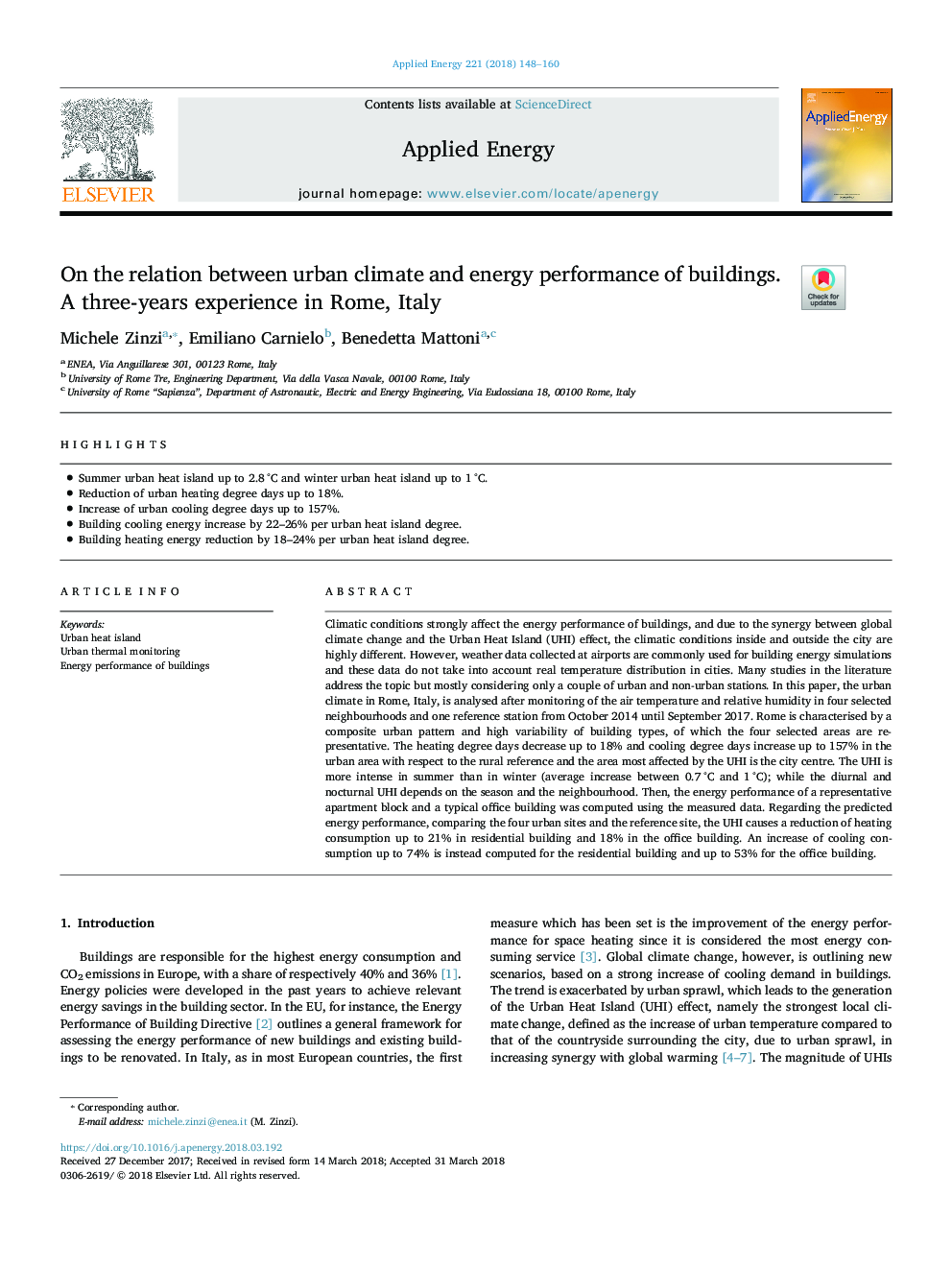| کد مقاله | کد نشریه | سال انتشار | مقاله انگلیسی | نسخه تمام متن |
|---|---|---|---|---|
| 6680183 | 1428069 | 2018 | 13 صفحه PDF | دانلود رایگان |
عنوان انگلیسی مقاله ISI
On the relation between urban climate and energy performance of buildings. A three-years experience in Rome, Italy
ترجمه فارسی عنوان
در رابطه بین محیط زیست شهری و عملکرد انرژی ساختمان ها. تجربه سه ساله در رم، ایتالیا
دانلود مقاله + سفارش ترجمه
دانلود مقاله ISI انگلیسی
رایگان برای ایرانیان
کلمات کلیدی
جزیره گرمایی شهری، نظارت بر گرمایی شهری، عملکرد انرژی ساختمان ها،
موضوعات مرتبط
مهندسی و علوم پایه
مهندسی انرژی
مهندسی انرژی و فناوری های برق
چکیده انگلیسی
Climatic conditions strongly affect the energy performance of buildings, and due to the synergy between global climate change and the Urban Heat Island (UHI) effect, the climatic conditions inside and outside the city are highly different. However, weather data collected at airports are commonly used for building energy simulations and these data do not take into account real temperature distribution in cities. Many studies in the literature address the topic but mostly considering only a couple of urban and non-urban stations. In this paper, the urban climate in Rome, Italy, is analysed after monitoring of the air temperature and relative humidity in four selected neighbourhoods and one reference station from October 2014 until September 2017. Rome is characterised by a composite urban pattern and high variability of building types, of which the four selected areas are representative. The heating degree days decrease up to 18% and cooling degree days increase up to 157% in the urban area with respect to the rural reference and the area most affected by the UHI is the city centre. The UHI is more intense in summer than in winter (average increase between 0.7â¯Â°C and 1â¯Â°C); while the diurnal and nocturnal UHI depends on the season and the neighbourhood. Then, the energy performance of a representative apartment block and a typical office building was computed using the measured data. Regarding the predicted energy performance, comparing the four urban sites and the reference site, the UHI causes a reduction of heating consumption up to 21% in residential building and 18% in the office building. An increase of cooling consumption up to 74% is instead computed for the residential building and up to 53% for the office building.
ناشر
Database: Elsevier - ScienceDirect (ساینس دایرکت)
Journal: Applied Energy - Volume 221, 1 July 2018, Pages 148-160
Journal: Applied Energy - Volume 221, 1 July 2018, Pages 148-160
نویسندگان
Michele Zinzi, Emiliano Carnielo, Benedetta Mattoni,
